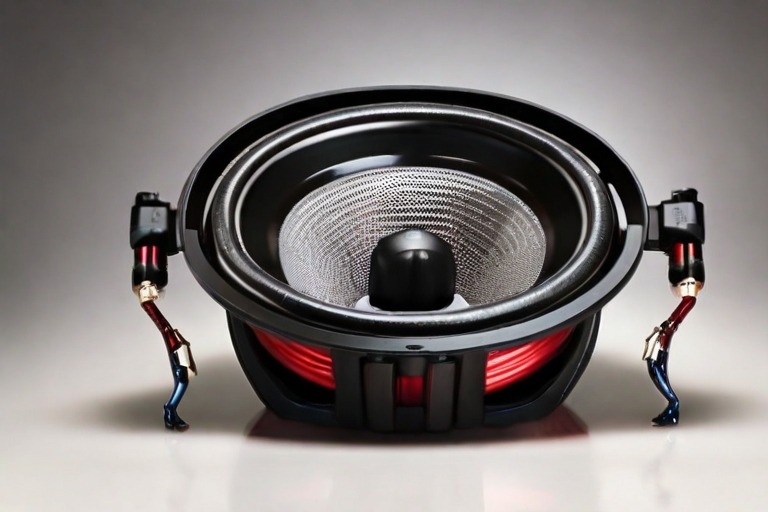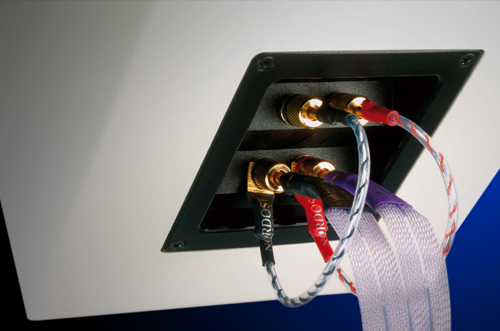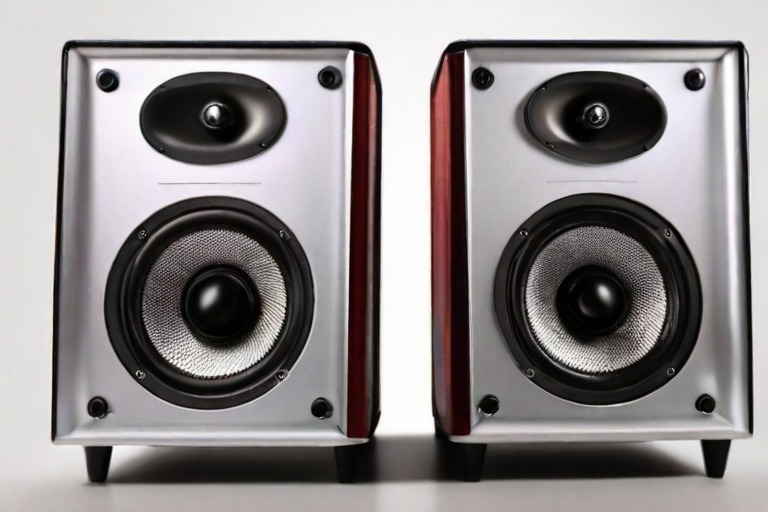Are you looking to get the best out of your audio system? Bi-wiring speakers might just be the solution you need to enhance your listening experience. This simple yet effective technique can improve the overall sound quality of your speakers by allowing them to work more efficiently.
In this guide, we’ll delve into the ins and outs of bi-wiring speakers, breaking down the process step by step. From understanding the concept to implementing it in your own audio setup, we’ve got you covered. So sit back, relax, and get ready to boost your audio experience like never before.
Bi-Wiring & Bi-Amping Explained | What is it? How do you do it? Is it worth it? Let’s talk about it!
Does Bi-Wiring Speakers Improve Sound?
There is a lot of debate surrounding the topic of bi-wiring speakers and whether or not it actually improves sound quality. While some people swear by the benefits of bi-wiring, others claim that it makes no difference at all. So, what’s the truth?
To start with, let’s briefly go over what bi-wiring actually is. Bi-wiring involves using two separate sets of speaker wires to connect your speakers to your amplifier. One set of wires carries the signal for the highs (treble), and the other set carries the signal for the lows (bass).
Some people believe that this can improve sound quality because it allows each type of frequency to have its own dedicated wire, which can reduce crosstalk and interference. Additionally, many high-end speakers come with built-in terminals that are specifically designed for bi-wiring. So, does bi-wiring actually improve sound quality?
There is no definitive answer, as it really depends on a number of factors such as your specific equipment and listening preferences. However, many audiophiles believe that bi-wiring can slightly improve clarity and definition in both the highs and lows. If you’re interested in trying out bi-wired speakers, we recommend working with an experienced audio professional to ensure that everything is properly set up and calibrated.
How Do You Use Bi-Wire Speakers?
Bi-wire speakers are a type of speaker that uses two sets of wires to connect to an amplifier. The first set of wires carries the low frequencies, and the second set carries the high frequencies. This allows for a better quality sound because each set of wires can be optimized for its respective frequency range.
To connect bi-wire speakers, you will need two sets of speaker wires. First, connect the low-frequency wire to the binding post labeled “LF” or “bass.” Next, connect the high-frequency wire to the binding post labeled “HF” or “treble.”
Make sure that the polarity is correct on both sets of wires (the red wire should go to the positive terminal, and the black wire should go to the negative terminal). Once everything is connected, you can enjoy your music with improved sound quality!

How Do You Make a Bi-Wire Speaker?
There are a few different ways that you can bi-wire your speakers. The most common way is to use two sets of speaker wires, with each set running from the amplifier to each speaker. You will then need to connect the positive terminal of one speaker wire to the positive terminal of the other speaker wire at the speaker and do the same for the negative terminals. Some people also like to use four sets of speaker wires, with two wires going to each speaker. This allows you to have even more control over the sound quality of your system.
How Do I Connect My Speakers to My Bi-Amp?
There are a few different ways that you can connect your speakers to a bi-amp, and the method that you choose will depend on the type of equipment that you have. If you have an amplifier with two separate outputs, then you can simply connect one output to each speaker. Alternatively, if your amplifier only has one output, you can use a Y-cable to split the signal into two parts, which can then be connected to each speaker.
If your speakers have binding posts, then it is best to use banana plugs or spade terminals to make the connection. If your speakers have spring clips, then you can use bare wire or pin connectors. It is important to make sure that the positive (red) and negative (black) wires are connected correctly, as reversing the polarity will result in poor sound quality. Once everything is connected, power on your amplifier and enjoy!

Credit: nordost.com
How to Bi-Wire Speakers to Amp
Most audiophiles agree that bi-wiring your speakers to your amplifier can result in improved sound. The theory behind bi-wiring is that it provides separate paths for the highs and lows (or the tweeter and woofer) from the amplifier to the speaker, which supposedly improves clarity and reduces interference. While some argue that the sonic improvement is negligible, others swear by it.
If you’re interested in giving bi-wiring a try, here’s how to do it: First, you’ll need to purchase two sets of speaker wire (one for the highs, one for the lows) and make sure they are long enough to reach from your amplifier to your speakers. You will also need banana plugs or another type of connector that is compatible with both your amplifier and your speakers.
Next, connect one set of speaker wires to the terminals marked “tweeter” or “highs” on your amplifier. Then, connect the other set of speaker wires to the terminals marked “woofer” or “lows” on your amplifier. Finally, use banana plugs or another type of connector to connect each set of speaker wires to its corresponding terminal on your speakers (i.e., connect the wires from the “tweeter” terminals on your amp to the “tweeter” terminals on your speakers). Once everything is connected, turn on your stereo system and enjoy!
Bi-Wire Speakers With Single Wire
Bi-wiring your speakers can be a great way to improve the sound quality in your home theater or music system. By running two separate wires to each speaker, you can keep the high and low frequencies from interfering with each other, resulting in clearer, more accurate sound. What’s more, bi-wiring can also help to reduce overall cable clutter.
If you’re thinking about bi-wiring your speakers, there are a few things you need to know before getting started. First, not all speakers are compatible with bi-wiring – so be sure to check with the manufacturer of your chosen speakers before proceeding. Second, you’ll need at least two sets of speaker wire (one for the highs, one for the lows) – and it’s important to make sure that both sets are of equal length.
Finally, while most receivers and amplifiers have provision for bi-wiring built-in, some older models may not – so again, check with your manufacturer before making any connections. Once you’ve got everything you need, hooking up your bi-wired speakers is a relatively simple process.
Just run one set of speaker wires to the positive terminal on each speaker (labeled “+” or “red”) and another set of wires to the negative terminals (labeled “-” or “black”). That’s it! You should now be enjoying enhanced sound quality courtesy of your new bi-wired setup.
Do Bi-Wiring Speakers Make a Difference
If you’re looking to improve your home audio setup, you might be wondering if bi-wiring speakers make a difference. The short answer is yes; bi-wiring can definitely improve sound quality. Here’s a closer look at how bi-wiring works and what it can do for your system.
Most speakers have just one set of terminals, which means the positive and negative wires are all bundled together. Bi-wiring involves using two separate sets of wires, one for the positive connection and one for the negative. This allows each signal to have its own dedicated path from the amplifier to the speaker, which can reduce interference and distortion.
Bi-wiring can make a big difference in sound quality, particularly in terms of clarity and detail. Music sounds more nuanced and refined when bi-wired speakers are used, and dialogue in movies becomes more intelligible. If you’re serious about getting the best possible sound out of your system, bi-wiring is definitely worth considering.

Frequently Asked Questions [FAQs]
What are bi-wiring speakers, and why might I want to do it?
Bi-wiring is a method of connecting a compatible amplifier and a pair of speakers using two pairs of speaker wires instead of one. This process supposedly allows for better sound quality by reducing signal distortion and enhancing the speakers’ overall performance.
What type of speakers can be bi-wired?
Speakers that can be bi-wired usually have two sets of binding posts: one for the high-frequency (tweeter) driver and one for the low-frequency (woofer) driver. The speakers’ manual or specifications should indicate if they can be bi-wired.
What type of amplifier do I need to bi-wire speakers?
You can bi-wire your speakers with any amplifier as long as it has an extra set of speaker outputs. However, the amplifier should be compatible with your speakers in terms of power output and impedance for optimal sound quality.
How do I bio-wire my speakers?
To bi-wire your speakers, you’ll need two sets of speaker cables. Connect one end of the first cable to the high-frequency output on your amplifier and the other end to the high-frequency input on your speaker. Repeat this process with the second cable, connecting the low-frequency output on your amplifier to the low-frequency input on your speaker.
Can I use different types of speaker cables for bi-wiring?
While it’s possible to use different types of speaker cables for bi-wiring, it’s generally recommended to use the same type of cable for both the high and low frequencies. Using different cables can result in different resistance levels, which can affect the sound quality.
Conclusion
If you’re looking to improve your audio setup, bi-wiring your speakers is a great way to do it. Bi-wiring involves running two sets of speaker wires to each speaker, with one set carrying the low frequencies and the other set carrying the high frequencies. This can provide a number of benefits, including improved sound quality and reduced crosstalk. If you’re not sure how to bi-wire your speakers, don’t worry – this guide will walk you through the process step by step.
